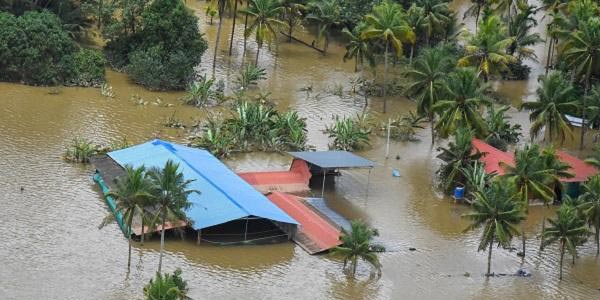Kerala Flood Relief 2018: The Role of Muslim NGOs in Bangalore

Kerala, the abode of relaxation, rejuvenation and among the world’s best destination for a holiday, has combated the worst of floods ever in the last century. The death toll has boomeranged to over 400 as of August 22, 2018. More than seven million children have been affected and over twenty thousand houses have been destroyed. Almost eleven lakh people are living in compromised relief camps where they are struggling with shortage of clean drinking water, food, daily essentials and medicines.
Severe flooding hit the Indian state of Kerala end of July and into August 2018 due to unusually high rainfall during the monsoon season. It was recorded as the worst flooding in Kerala in the last hundred years. Within a fortnight, lakhs of people were evacuated, mainly from Chengannur, Pandanad, Aranmula, Aluva, Chalakudy, Kuttanad and Pandalam.
Fourteen of the forty districts of the state were placed on red alert. According to the Kerala government, one-sixth of the total population of Kerala had been directly affected by the floods and related incidents. The Union government had declared it a Level three Calamity or ‘Calamity of a severe nature’. Thirty-five out of the forty-two dams within the state were opened for the first time in history.
Even before other districts were hit, the first place to be affected was Waynad. An Emergency Response Team [ERT] comprising of many NGOs from Bangalore was formed to send relief material to Kerala. The ERT team is front-ended by Hira Welfare Association [HWA] and supported by VCET, Healing Touch, The United Foundation and Hope Foundation.
A pilot team with relief goods was sent to Waynad to reach out to the flood victims and also gather a first-hand report of the damage and the immediate needs. As the floods had reduced and the water had started to recede, a second consignment of basic needs and cleaning material was dispatched to Waynad.
Our team also met the four panchayat presidents to channelize the help. We requested the panchayat representatives for a report of the totally damaged and partially damaged homes. Our team returned to Bangalore and the panchayat people committed to revert with information in the next two days. Unfortunately heavy rains resumed the next day and the fury of the deluge saw a new height of destruction.
Due to the rough terrain event the army and navy were unable to reach basic food to the victims. The need for boats was evident and the ERT dispatched three boats from Bangalore for the rescue and supply of essentials. The boats were put into good use as the entire Waynad district had only two boats.The addition of these three boats was a great relief as many people who were struck and stranded could be reached.
Ideal Relief Wing [IRW] and Jamaat-e-Islami Hind [JIH] volunteers have worked alongside the government rescue operations. Seeing their rescue impact and network to organize relief material, the IRW and JIH volunteers were called by the collector’s office in Waynad and government approved rescue authorization badges were awarded to these teams.
Continued and heavy monsoon rain caused the water level in the thirty five dams increase to dangerous levels and the gates of the dams had to be opened. This, in turn, led to heavy flooding of various areas like Nilambur and Alva. Alva, Parur, Perambur and about 10 to 15 panchayats were submerged with over six meters of water.
There was a demand for boats again. We sent two more boats to Alva and two boats to Chengannur. Even in this sector IRW had a very important role to play in the rescue and relief work.
The damage and loss across the fourteen districts goes unprecedented and the gross estimate will evolve as Kerala is restored to normalcy. Any flood has typically three important phases – the first phase is the rescue phase where the focus is to save lives and take them to a safe zone.
The second phase is the relief phase where the people who have been settled in relief camps have basic daily needs to be addressed. Our teams are continuously coordinating with various camps and sending the required and relevant relief material. The third and the most difficult of the phases is the rehabilitation phase which can last anywhere from six months to a year.
With Kerala limping back to normalcy after devastating flood the focus now is shifting to the some eleven lakh people living in about three thousand relief camps across the state. For the five lakh people who have got back home, a mammoth task of cleaning and dealing with poisonous snakes and reptiles like crocodiles and other harmful animals is a new challenge.
The fear of water-borne diseases looms large as the overall situation continues to remain critical. Mud, silt and debris have been deposited in homes and the cleaning of this is an extremely difficult task. Generators, pumps and water jet cleaners are now required.
The ERT has arranged two generators, one water pump to clean the wells and thirty pressure water jets for cleaning the mud and silt. We are now amidst the second and the third phase and Kerala will need support from all parts of the world to get “God’s Own Country” back to the beauty it contains.
* Dr. Syed Habeeb is the Co-Founder of The United Foundation which has its website at www.tufindia.org

